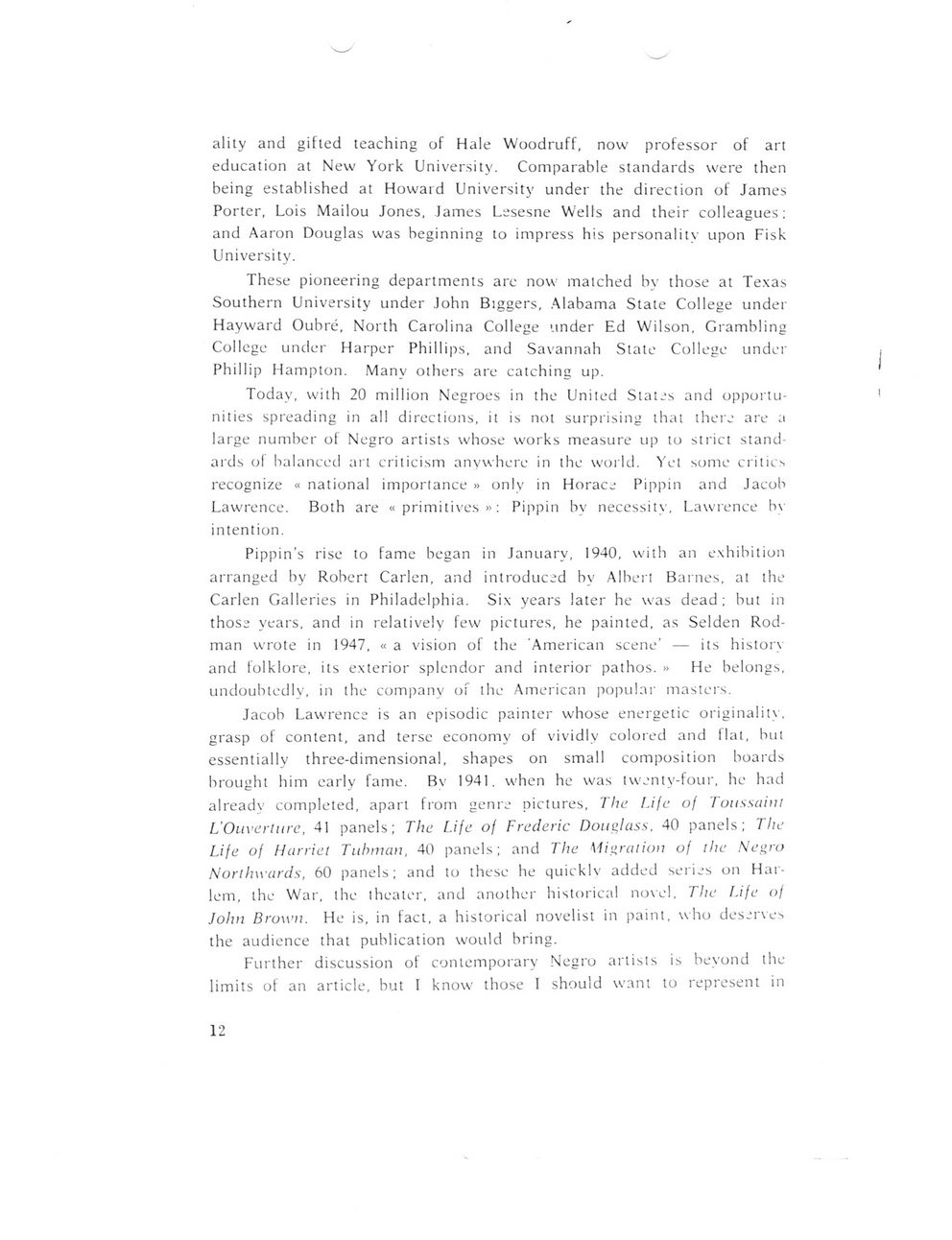This text was obtained via automated optical character recognition.
It has not been edited and may therefore contain several errors.
ality and gifted teaching of Hale Woodruff, now professor of art education at New York University. Comparable standards were then being established at Howard University under the direction of James Porter, Lois Mailou Jones, James Lesesne Wells and their colleagues; and Aaron Douglas was beginning to impress his personality upon Fisk University. These pioneering departments are now matched bv those at Texas Southern University under John Biggers, Alabama State College under Hayward Oubre, North Carolina College under Ed Wilson, Grambling College under Harper Phillips, and Savannah State College under Phillip Hampton. Many others are catching up. Today, with 20 million Negroes in the United States and opportunities spreading in all directions, it is not surprising that there are a large number of Negro artists whose works measure up to strict standards ol balanced art criticism anvwhcre in the world. Yet some critics recognize ? national importance ? only in Horace Pippin and Jacob Lawrence. Both are ? primitives ?: Pippin by necessity, Lawrence by intention. Pippin?s rise to fame began in January, 1940, with an exhibition arranged by Robert Carlen, and introduced by Albert Barnes, at the Carlen Galleries in Philadelphia. Six years later he was dead; but in those years, and in relatively few pictures, he painted, as Selden Rodman wrote in 1947, ? a vision of the American scene' ? its history and folklore, its exterior splendor and interior pathos. ? He belongs, undoubtedly, in the company of the American popular masters. Jacob Law'rence is an episodic painter whose energetic originality, grasp of content, and terse economy of vividly colored and flat, but essentially three-dimensional, shapes on small composition boards brought him early fame. Bv 1941. when he was twenty-four, he had already completed, apart from genre pictures, The Life of Toussaim L'Ouverture, 41 panels; The Life of Frederic Douglass, 40 panels; The Life of Harriet Tubman, 40 panels; and The Migration of the Negro Northwards, 60 panels; and to these he quickly added series on Harlem, the War, the theater, and another historical novel, The Life of John Brown. He is, in fact, a historical novelist in paint, who deserves the audience that publication would bring. Further discussion ol contemporary Negro artists is beyond the limits of an article, but I know those I should want to represent in 12

Barthe, Richmond American-Negro-Art-11